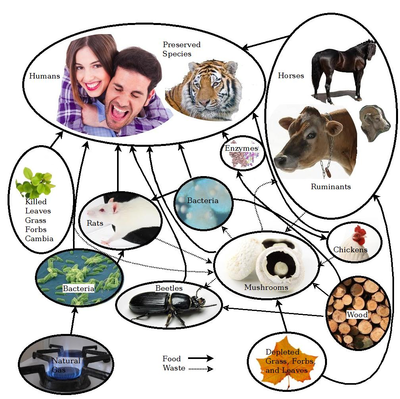How Easy is it to Feed Everyone? Economic Alternatives to Eliminate Human Nutrition Deficits

One of the UN’s 17 sustainable development goals is to end hunger, achieve food security and improved nutrition by 2030. This goal will be missed. Global hunger is still highly prevalent. In 2021, about 821 million people experience undernourishment every day and more are at risk. Is this necessary? This article calculates the investments needed for both acute and sustainable systems to alleviate food insecurity and decrease global caloric deficits. These economic values are then contextualized by comparing funds spent by individuals and governments on unnecessary or counterproductive products. The results show that divergence of even small fractions of these funds from food waste, tobacco, alcohol, or weapons within the U.S. alone could supplement the caloric needs of those in areas with high levels of food insecurity. America’s net-negative industries whose advertisements and sales could be taxed to improve America’s life expectancy could fund the yearly cost to feed anywhere from 17.1% to 1,467.9% of malnourished people directly, or contribute more than 100% of the estimated cost to sustainably end global hunger. It is concluded that reallocating funds that are detrimental to the U.S. population is a path to achieving food security and sustainable food production for the entire globe.
Source
- Meyer, T.K., Pearce, J.M. How Easy is it to Feed Everyone? Economic Alternatives to Eliminate Human Nutrition Deficits. Food Ethics 8, 3 (2023). https://doi.org/10.1007/s41055-022-00113-3 Academia OA
See also[edit | edit source]

- Feeding Everyone No Matter What - The full book main page
- David Denkenberger and Joshua Pearce, Feeding Everyone No Matter What: Managing Food Security After Global Catastrophe , 1st Edition, Academic Press, 2015
- Free Preview: Google books
- Cover on Academia
- Facebook page
- Alternative Foods as a Solution to Global Food Supply Catastrophes
- Resilience to global food supply catastrophes
- Feeding Everyone if the Sun is Obscured and Industry is Disabled
- Cost-Effectiveness of Interventions for Alternate Food to Address Agricultural Catastrophes Globally
- Feeding Everyone: Solving the Food Crisis in Event of Global Catastrophes that Kill Crops or Obscure the Sun
- Food without sun: Price and life-saving potential
- Cost-effectiveness of interventions for alternate food in the United States to address agricultural catastrophes
- Micronutrient Availability in Alternative Foods During Agricultural Catastrophes
- Preliminary Automated Determination of Edibility of Alternative Foods: Non-Targeted Screening for Toxins in Red Maple Leaf Concentrate
- Open Source Software Toolchain for Automated Non-Targeted Screening for Toxins in Alternative Foods
- Scaling of greenhouse crop production in low sunlight scenarios
- Potential of microbial protein from hydrogen for preventing mass starvation in catastrophic scenarios
- U.S. Potential of Sustainable Backyard Distributed Animal and Plant Protein Production During & After Pandemics
- Global distribution of forest classes and leaf biomass for use as alternative foods to minimize malnutrition
- Long-term cost-effectiveness of interventions for loss of electricity/industry compared to artificial general intelligence safety
- Long term cost-effectiveness of resilient foods for global catastrophes compared to artificial general intelligence safety
- Rapid repurposing of pulp and paper mills, biorefineries, and breweries for lignocellulosic sugar production in global food catastrophes
- Nutrition in Abrupt Sunlight Reduction Scenarios: Envisioning Feasible Balanced Diets on Resilient Foods
- Methane Single Cell Protein: securing protein supply during global food catastrophes
- Killing two birds with one stone: chemical and biological upcycling of polyethylene terephthalate plastics into food
- How Easy is it to Feed Everyone? Economic Alternatives to Eliminate Human Nutrition Deficits
- Quantifying Alternative Food Potential of Agricultural Residue in Rural Communities of Sub-Saharan Africa
- Yield and Toxin Analysis of Leaf Protein Concentrate from Common North American Coniferous Trees
- Toxic Analysis of Leaf Protein Concentrate Regarding Common Agricultural Residues
- Towards Sustainable Protein Sources: The Thermal and Rheological Properties of Alternative Proteins
- How we can mine asteroids for space food
Additional Information[edit source]
- ALLFED
- Dave Denkenberger Publications
- OSE Wiki "Synfood" (i.e. protein and other dietary components from microbial organisms fed on gas or other hydrocarbons)





